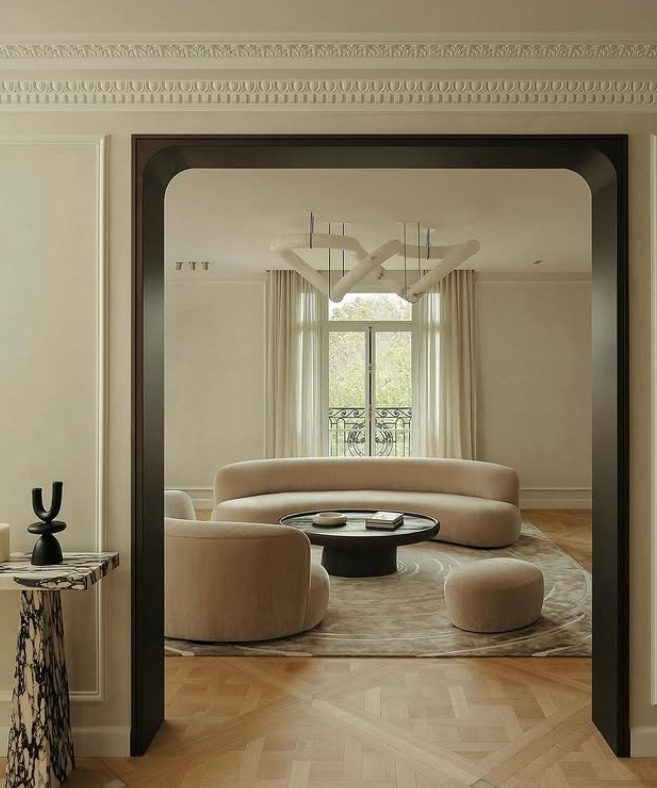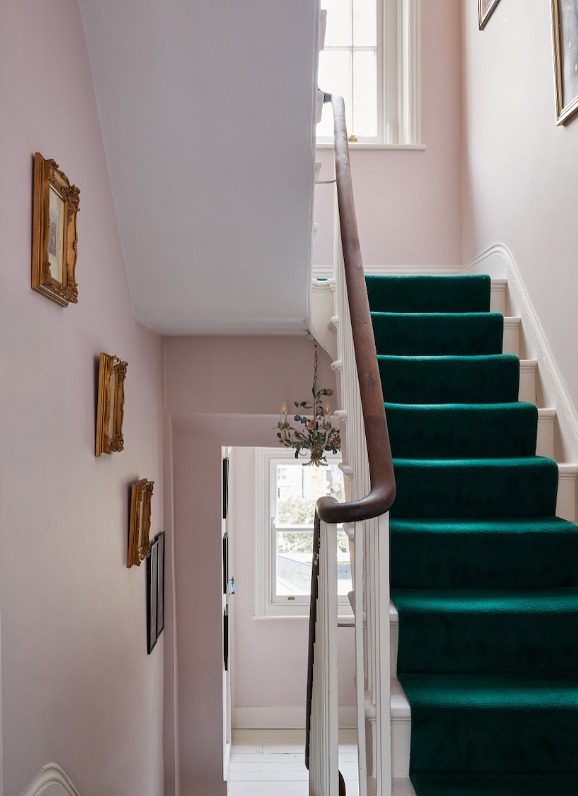Creating proportional spaces using the best
Interior Design rules
One of the key elements for creating balanced and visually appealing spaces is to understand scale and proportion. This includes factors such as space distribution, furniture placement, colour distribution, and decor. We’re talking about the 70/30 rule or the 80/20 rule, which are easy interior design tips to implement. When done correctly, they can have transformative effects.
How does it work? Here are some insights we’ve learned along the way to help you get started!

livingroom@pierre_augustin_rose
The importance of scale and proportion
First thing first, the theory.
Scale refers to how objects relate to the size of the room. A large sofa in a small living room can feel overwhelming, while small furniture may look out of place.
Proportion is the relationship between different elements in a space. The golden ratio 1:1.618 (known as the Fibonacci sequence) is a widely used principle that ensures visual balance. For example, pairing large furniture with appropriately scaled décor and varying heights, it’s a way to create depth and interest.
The 70/30 rule in Interior Design
The 70/30 rule suggests that 70% of a space should follow a dominant style, colour, or material, while the remaining 30% introduces contrast. This simple formula prevents monotony and enhances visual interest. How can it be applied?
colour scheme
Use a dominant colour for 70% of the space and accent with another shade for the remaining 30%.
furniture & décor
Choose foundational pieces (sofas, beds, etc.) in a cohesive style for 70% of the space, then add contrast with 30% through statement elements like chairs or artwork.
textures & materials
Blend 70% of the room with consistent materials (wood, metal, fabric), and for the remaining 30%, introduce complementary textures to add depth.
the rule of thirds
Divide the space into three sections to guide furniture placement and art arrangements, ensuring balance.
negative space
Allow breathing room between objects to prevent a cluttered look.
The 20/80 rule in Interior Design
The 20/80 rule is another guideline for achieving balance. It suggests that 20% of the space should feature bold, statement-making elements, while the remaining 80% should maintain a more neutral or with an understated approach. This creates focus and visual impact without overwhelming the space. How can it be applied?
colour scheme
Consider using neutral tones for 80% of the room and introducing bold, statement colors or decor pieces for the remaining 20% to create focal points.
furniture & décor
Use 80% of the materials in neutral, timeless finishes, and incorporate 20% with bold or unconventional textures to make the design stand out. For example, in a kitchen, this could mean using 80% neutral cabinets with 20% accent kitchen backsplash or countertop in a bold colour.
textures & materials
Blend 70% of the room with consistent materials (wood, metal, fabric), and for the remaining 30%, introduce complementary textures to add depth.
the rule of thirds
Apply the 20/80 rule by making 20% of the space a striking focal point, like a dramatic piece of art or a bold furniture choice, while the rest remains more balanced.
negative space
80% of the space should remain clean and open, while 20% can be filled with objects or features that create a sense of emphasis or interest.
Why do these principles work?
Combining scale, proportion, and one of the two rules creates spaces that feel intentional, functional, and visually engaging. Mastering these fundamentals will help you design interiors that are both dynamic and cohesive.
If you seek professional help to achieve the right balance in your space, our Interior Power Hour will guide you in refining the best layout, décor, and textures to create a harmonious and well-proportioned design.

bedroom@studio_haddou_dufourcq

kitchen@arentpykestudio

hallway@tash_lickcolour
